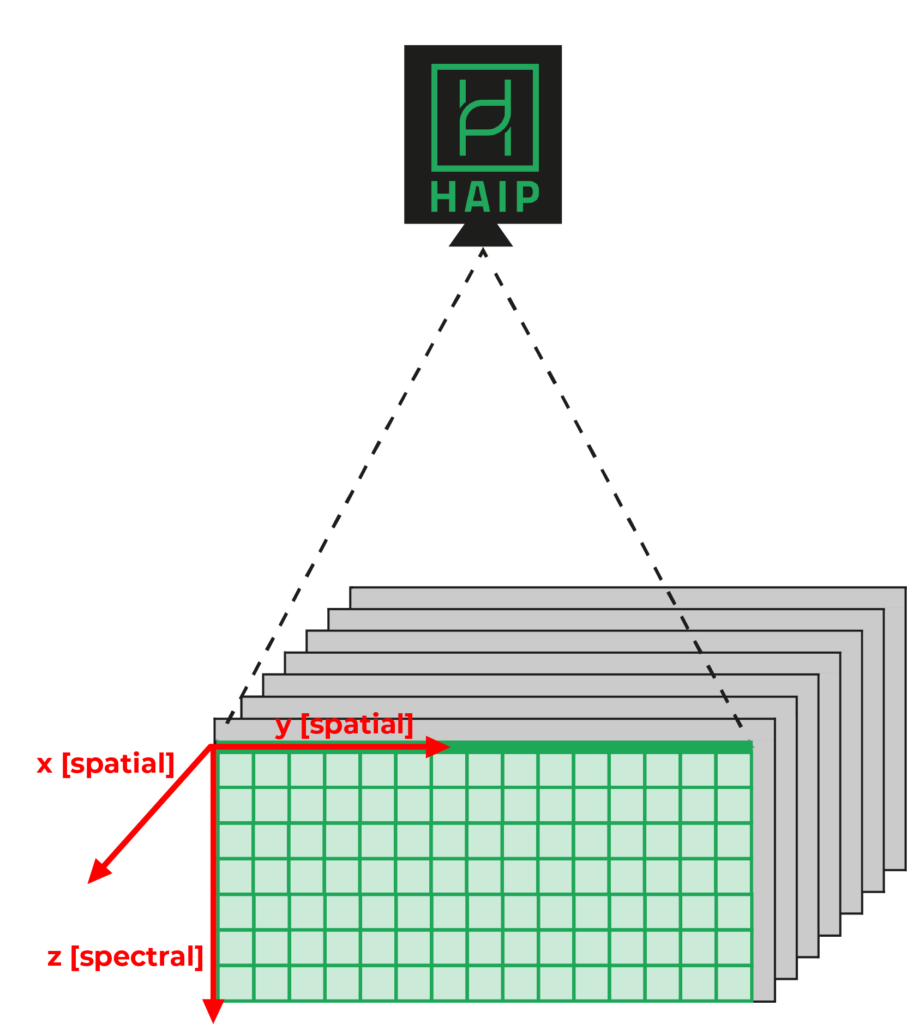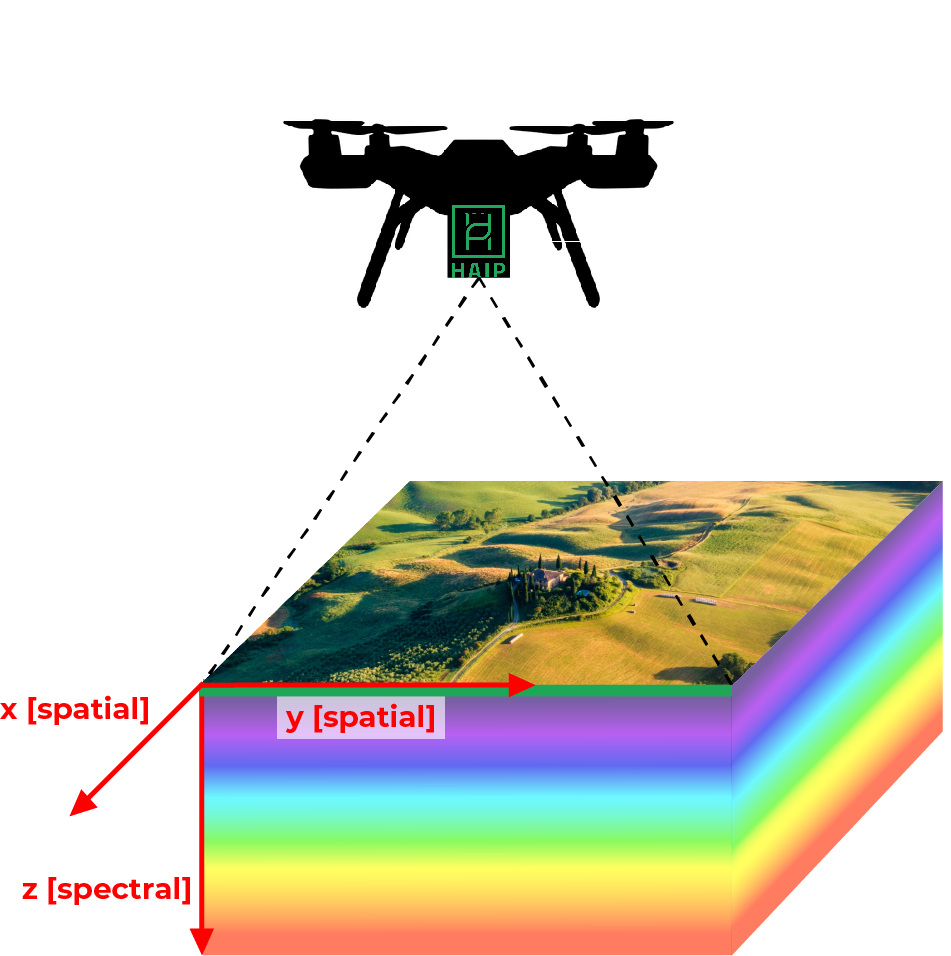Knowledge Base
1. The idea of hyperspectral imaging
“Hyperspectral imaging expands human vision and allows us to look beyond the visible.”
Hyperspectral Imaging, also known as Imaging Spectroscopy, is the technology to measure the intensity of reflected light for each pixel of an image. This intensity is captured for each wavelength of the light and is displayed as an intensity spectrum, a so-called reflectance spectrum.
Each material reflects light differently. Therefore, the reflection spectrum of each material is also unique. Just like a human fingerprint, the reflectance spectrum can be used to identify the corresponding material. In addition, various properties of materials and objects can be analyzed via the reflection spectrum.
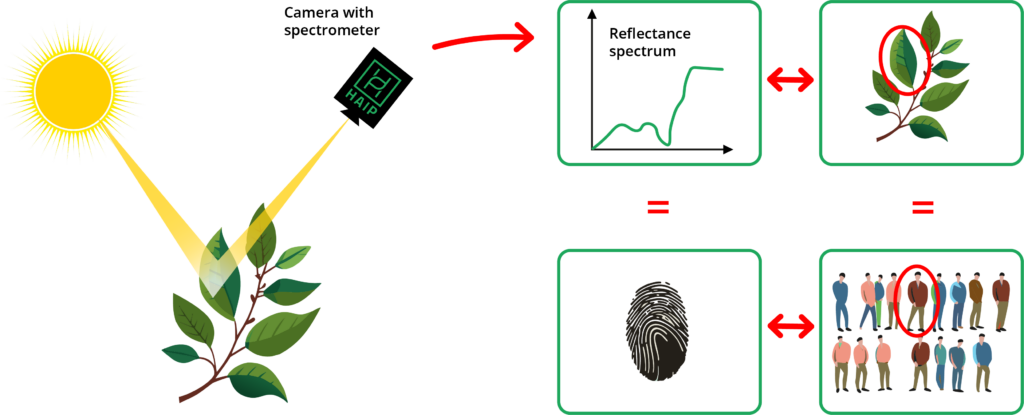
2. The electromagnetic spectrum
“Hyperspectral imaging collects and processes information from across the electromagnetic spectrum.”
Electromagnetic radiation is the transmission of energy in the form of electromagnetic waves that propagate in space. An example is the sunlight that also occurs as electromagnetic waves. Such a wave can be characterized by the parameter wavelength λ, frequency ν, amplitude Α and its propagation velocity, the speed of light c.
- frequency ν: number of waves that pass a given location in each second. The unit is hertz (Hz)
- Propagation velocity = speed of light: depends on wavelength; in vacuum c = 2.9979*10^8 m/s

Different compositions of frequencies and wavelengths occur naturally on earth. This range of characteristics is represented as an electromagnetic spectrum. The human eye can see the electromagnetic waves in the range between 400 – 700 nm. That is what we call visible light.
HAIP Solutions‘ products capture electromagnetic radiation in the visible light (VIS), the near infrared (NIR) or the short-wave infrared (SWIR) range. The considered wavelength ranges of the products are 400 – 800 nm (VIS), 700 – 1000 nm (NIR) and 900 – 1750 nm (SWIR).
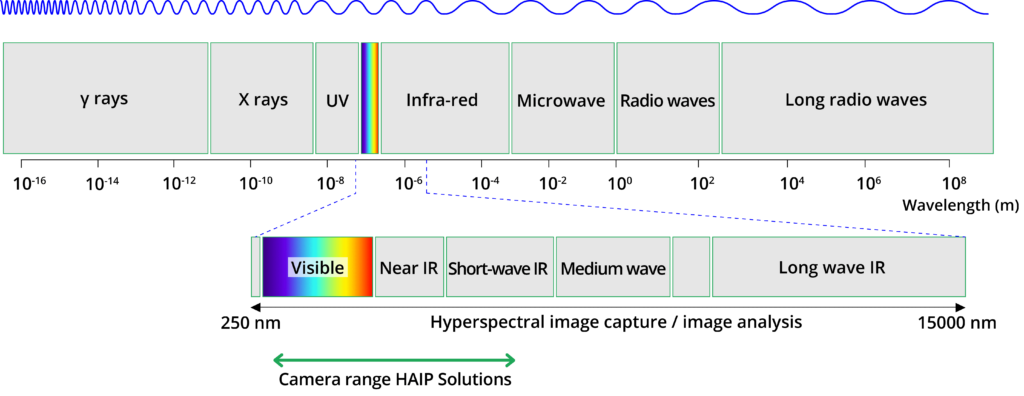
3. Hyperspectral vs. Multispectral
“The human eye sees visible light in three bands (red, green and blue), with spectral imaging it is possible to look into many more bands.”
Optical sensors store the recorded wavelengths in groups, the so-called wavelength bands.
A normal image consists of three bands: red, green, and blue. All three bands are in the visible range of the human eye, that is why we see the image in color.
A multispectral sensor collects the incoming waves in up to 20 bands, not only in the visible wavelength range but also in the infrared region of the electromagnetic spectrum. As a result, you get more information about the scanned object than in an RGB image.
Beyond that, a hyperspectral sensor consists of usually over 100 spectral bands that provide continuous coverage over one region of the electromagnetic spectrum. Additionally, the bands of hyperspectral sensors are much smaller than the bands of multispectral sensors, thus they group less wavelengths in one group. The result is detailed information about the optical spectrum of the scanned object.
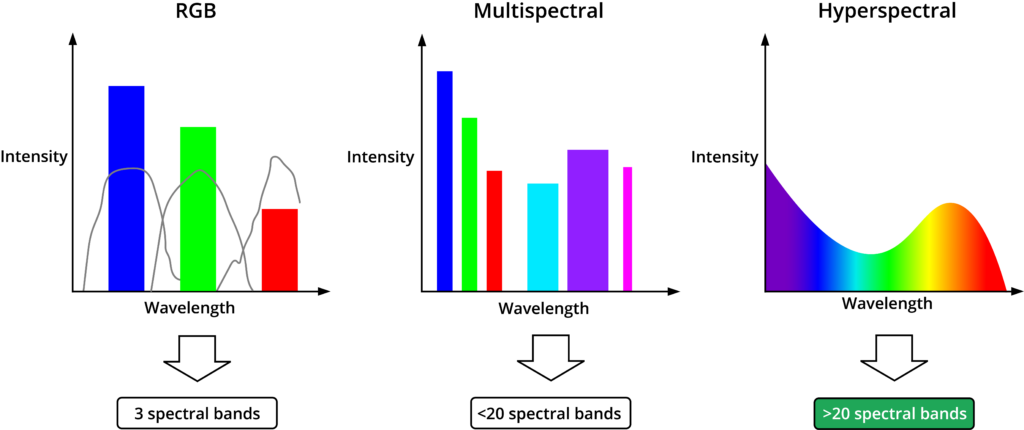
4. The hyperspectral data cube
“Hyperspectral cameras do not take photos, they create cubes.”
A hyperspectral data cube represents the totality of the generated data of a hyperspectral sensor. Imagine that the hyperspectral sensor takes a picture of an object for every band and stacks them up. The result is a 3D cube that has two spatial dimensions x and y, and a spectral dimension in z-direction. If only one pixel of the hyperspectral data cube is considered, the information stored in the spectral dimension can be summarized in a reflectance spectrum of the pixel.
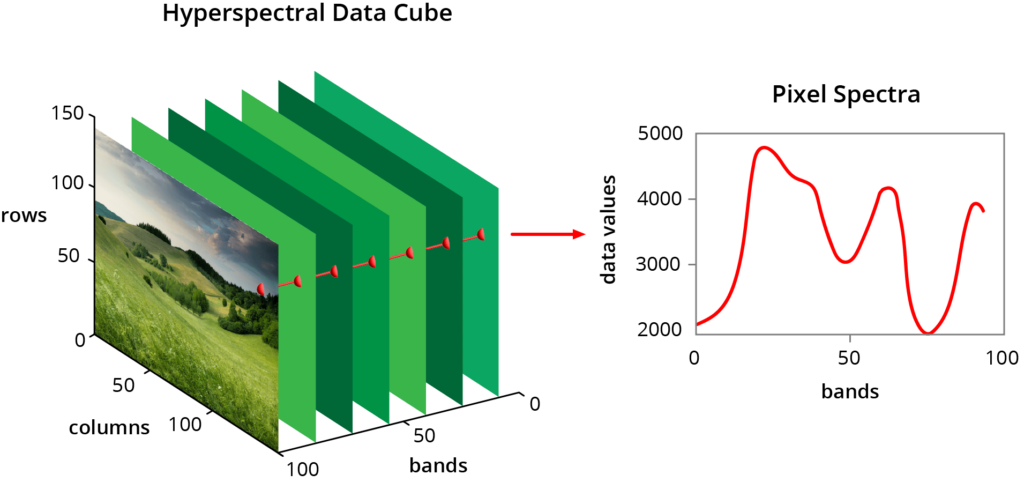
5. The line scanning method
“What does a hyperspectral camera and a broom have in common?”
Generally, there are four different types of hyperspectral sensors. They all have different ways to acquire a hyperspectral data cube.
The line scanner or push broom scanner scans one pixel line of an image at a time, simultaneously capturing the spectral information of this pixel line. To acquire an entire image or hyperspectral data cube, the camera needs to be moved to scan the next line of pixels.
The great advantage of this scanning method is the high level of spectral detail that can be achieved and the high frame rate. All HAIP Solutions cameras are equipped with line scanning sensors.
